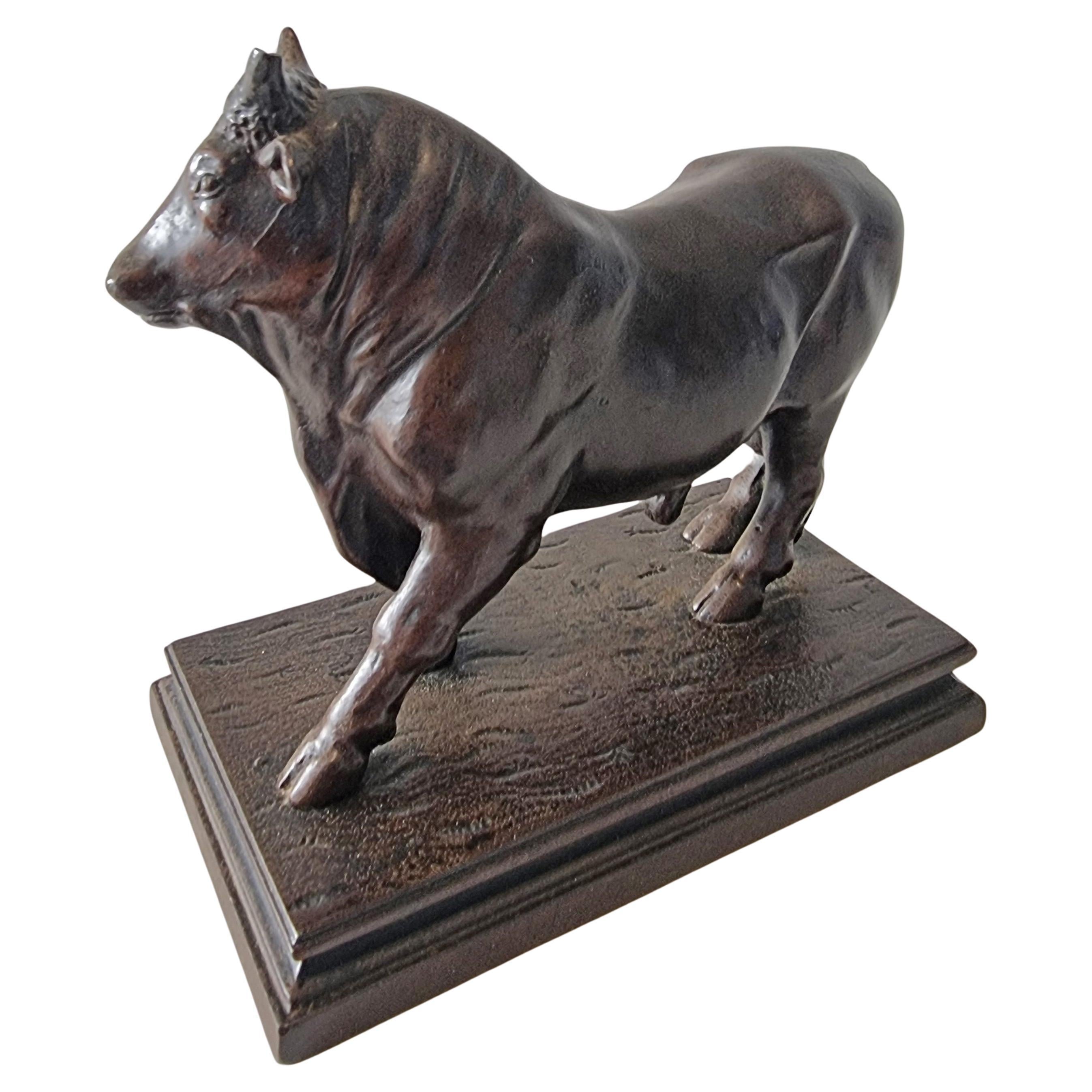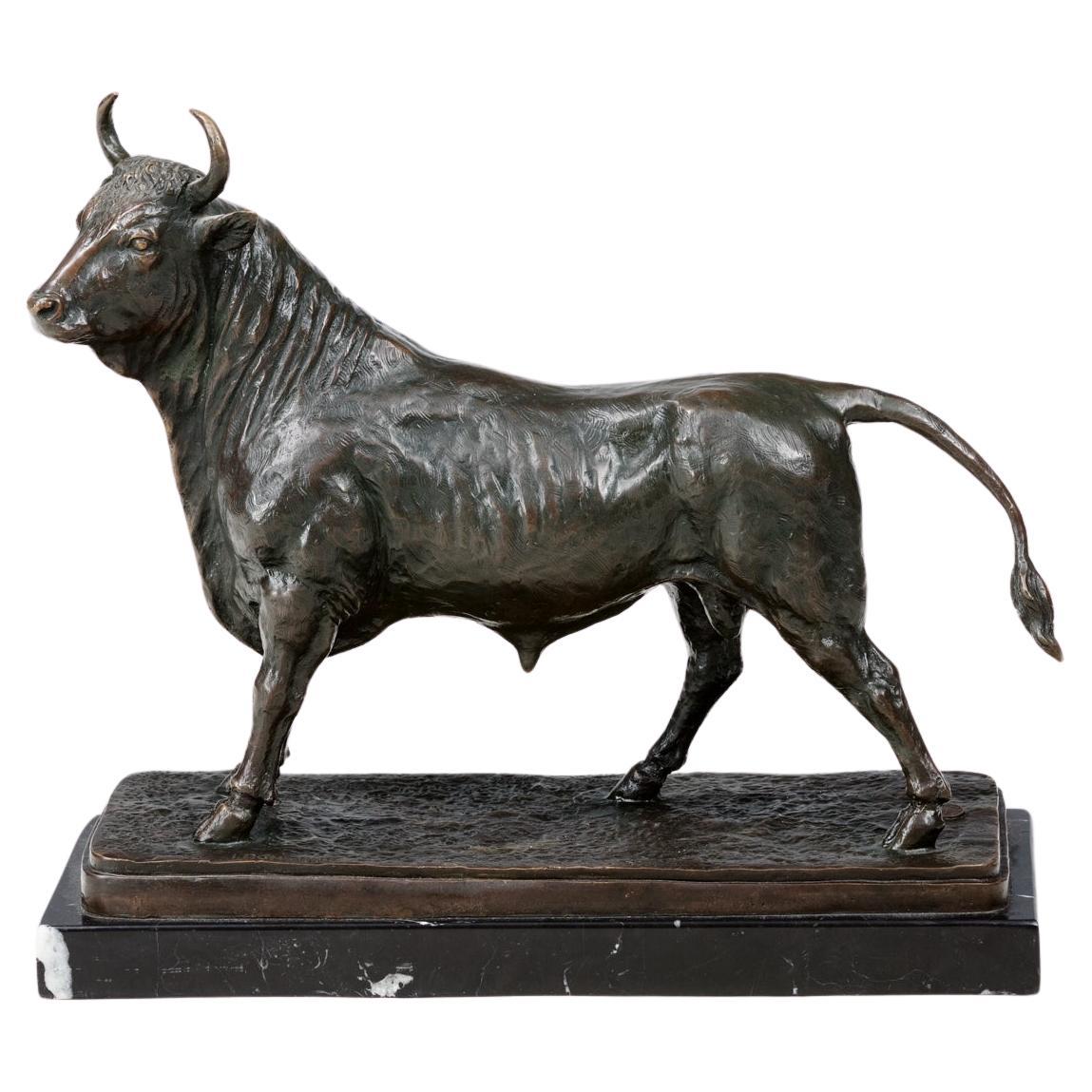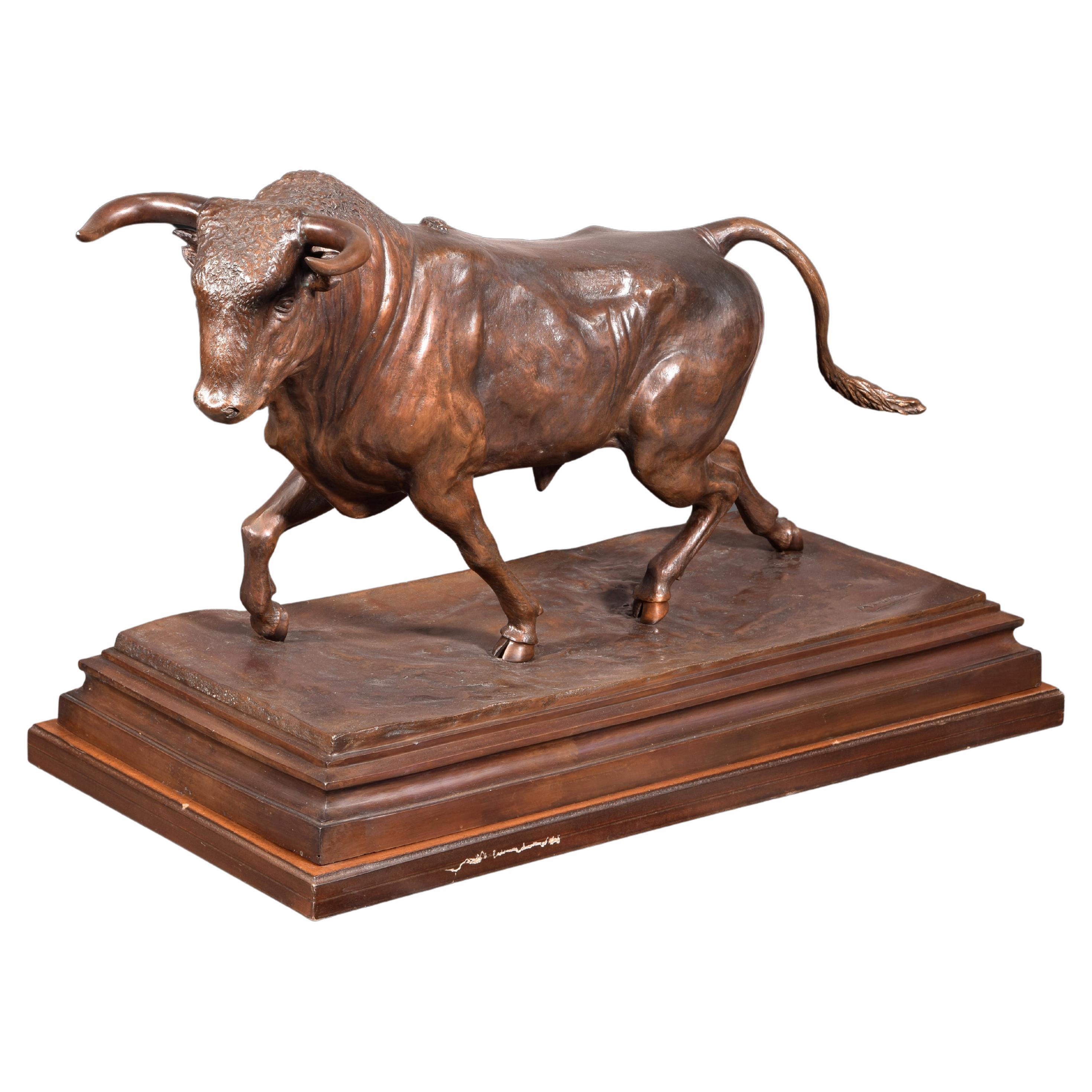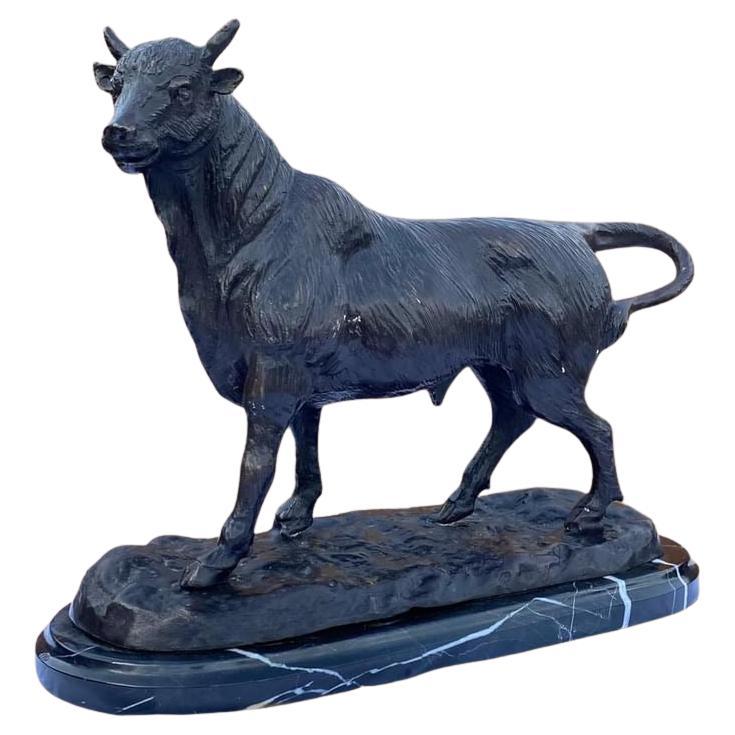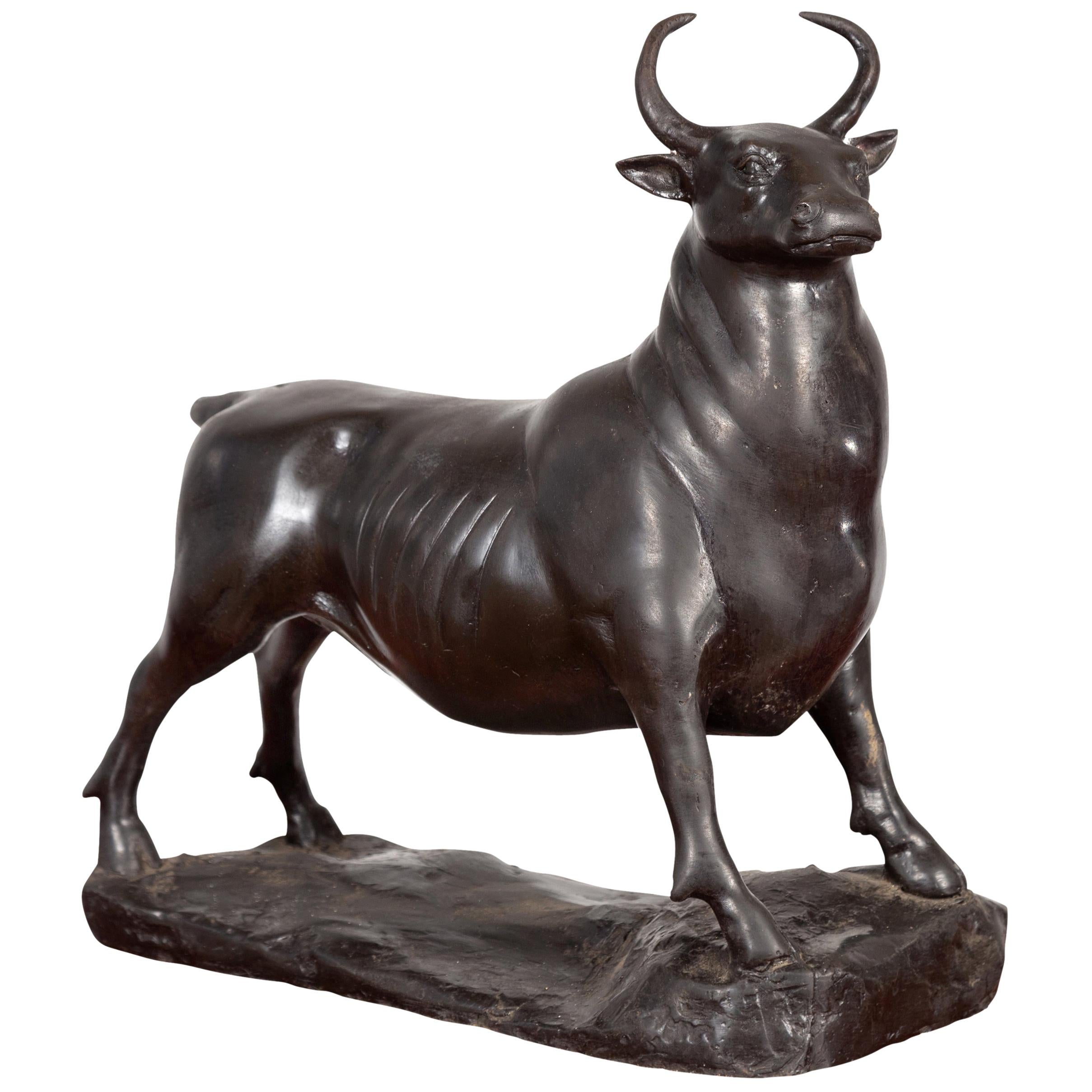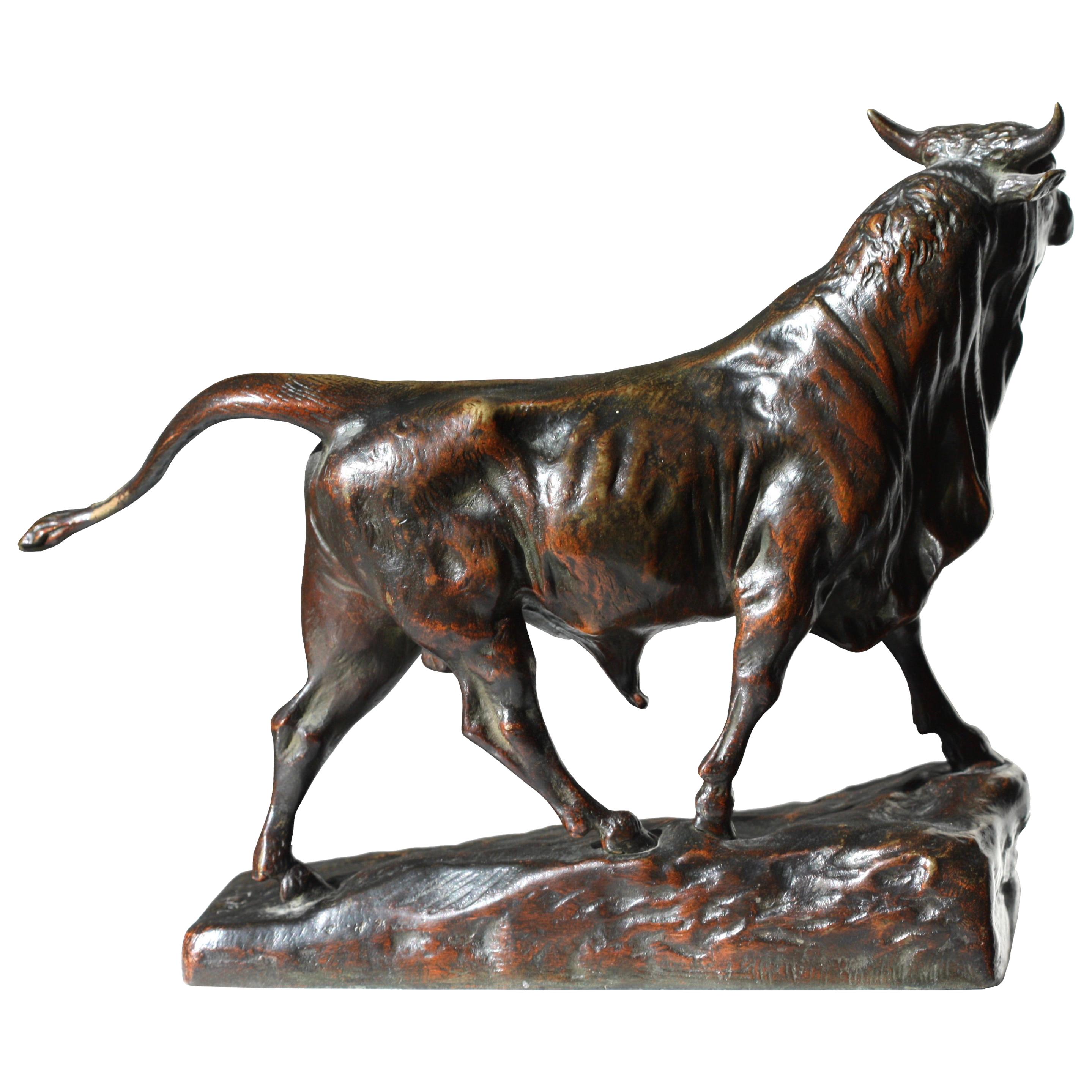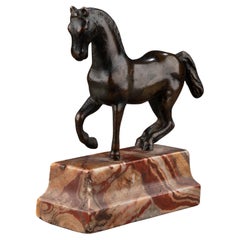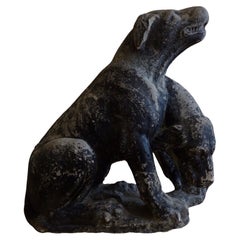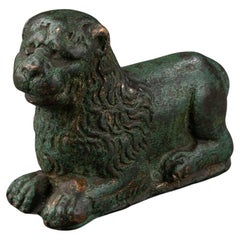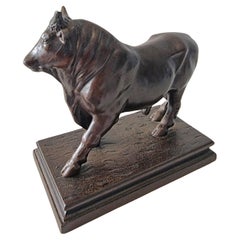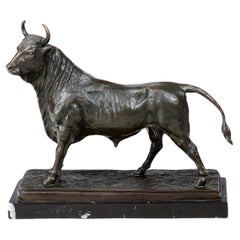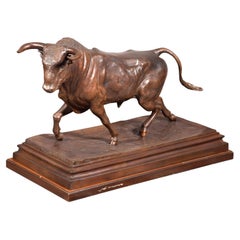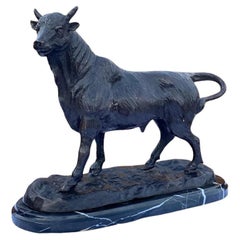Items Similar to AFTER A MODEL BY GIAMBOLOGNA (1529–1608) - Pacing Bull
Want more images or videos?
Request additional images or videos from the seller
1 of 5
AFTER A MODEL BY GIAMBOLOGNA (1529–1608) - Pacing Bull
$10,228.45
£7,572.66
€8,500
CA$14,162
A$15,461.52
CHF 8,105.84
MX$187,786.06
NOK 101,228.74
SEK 95,586.92
DKK 64,712.32
About the Item
AFTER A MODEL BY GIAMBOLOGNA (1529–1608)
Pacing Bull
17th century
Bronze, on an ebonised wood base
H totale 15 x L 11,5 x P 8,2 cm
Since antiquity, the bull has been venerated as a symbol of strength and fertility. Following the horse, it became one of the most favored animal subjects in European sculpture of the 17th century. This elegant bronze represents a fine cast of a model attributed to Antonio Susini, a close collaborator of Giambologna and a prominent figure in the Medici court workshop.
Susini is believed to have created his version of the Pacing Bull while still working under Giambologna, drawing directly from the master's original conception. The present cast belongs to the extensive lineage of variants and replicas derived from this celebrated model.
Likely of Northern Italian origin and dating to the 17th century, this cast displays technical features consistent with that period. The result is a finely executed sculpture, imbued with both dynamism and sculptural finesse, characteristic of the enduring influence of Giambologna’s workshop.
- Dimensions:Height: 8.67 in (22 cm)Width: 4.53 in (11.5 cm)Depth: 3.23 in (8.2 cm)
- Style:Renaissance (Of the Period)
- Materials and Techniques:Bronze,Cast
- Place of Origin:
- Period:
- Date of Manufacture:17th century
- Condition:Wear consistent with age and use.
- Seller Location:Bruxelles, BE
- Reference Number:1stDibs: LU6666245073092
About the Seller
5.0
Vetted Professional Seller
Every seller passes strict standards for authenticity and reliability
1stDibs seller since 2022
15 sales on 1stDibs
Typical response time: <1 hour
- ShippingRetrieving quote...Shipping from: Bruxelles, Belgium
- Return Policy
Authenticity Guarantee
In the unlikely event there’s an issue with an item’s authenticity, contact us within 1 year for a full refund. DetailsMoney-Back Guarantee
If your item is not as described, is damaged in transit, or does not arrive, contact us within 7 days for a full refund. Details24-Hour Cancellation
You have a 24-hour grace period in which to reconsider your purchase, with no questions asked.Vetted Professional Sellers
Our world-class sellers must adhere to strict standards for service and quality, maintaining the integrity of our listings.Price-Match Guarantee
If you find that a seller listed the same item for a lower price elsewhere, we’ll match it.Trusted Global Delivery
Our best-in-class carrier network provides specialized shipping options worldwide, including custom delivery.More From This Seller
View AllPacing Horse - Italian School, 18th century
Located in Bruxelles, BE
Italian School, 18th century
Pacing Horse
Bronze with brown patina, on a rectangular marble base
H 8 x L 8,5 x P 3 cm
H totale 11 cm
Category
Antique 18th Century Italian Baroque Animal Sculptures
Materials
Marble, Bronze
Study of a Satyr - Italy, early 19th century
Located in Bruxelles, BE
Study of a Satyr
Bronze, cast using the lost-wax (cire perdue) method
Italy, early 19th century
14 x 7 x 10 cm
This evocative bronze sculpture represents a satyr, the half-human, h...
Category
Antique Early 19th Century Italian Modern Figurative Sculptures
Materials
Bronze
Cerberus, Italy, 17th Century
Located in Bruxelles, BE
Cerberus
Black painted stone
Italy, 17th century
Measures: 80 x 69 x 36cm
(one head missing)
Cerberus, cruel monster, fierce and strange,
Through his wide threefold throat barks as a dog
Over the multitude immers'd beneath.
His eyes glare crimson, black his unctuous beard,
His belly large, and claw'd the hands, with which
He tears the spirits, flays them, and their limbs
Piecemeal disparts (Dante, Inferno, Canto VI).
Cerberus figure seated, in his role of ferocious guardian of the underworld; he shows a nervous musculature, an adherent skin which reveals the ribs, long and robust limbs; his heads are broad and the eyes set well apart.
Painted in black to amplify his menacing look, the infernal guardian is depicted with his famous attributes, writhing his heads, growling and barking furiously.
Cerberus, in Greek mythology, was the monstrous watchdog of the underworld – also known as the “hound of Hades” – preventing the dead from leaving, and making sure that those who entered never left.
A child of Typhon and Echidna, he was part of a monstrous family, which included Orthus, the Lernaean Hydra, and the Chimaera as well. Only on three occasions Cerberus was tricked by visitors of Hades: Heracles did it with his strength, Orpheus with his music.
In "The Inferno", Dante places Cerberus as the guardian of the third circle of Hell. With his three mouths, Dante saw Cerberus as a beast that was synonymous with the sin of Gluttony. Virgil gets past the monster by throwing mud in his three mouths, temporarily choking him.
Very rare are the representations of Cerberus in ancient statuary...
Category
Antique 17th Century Italian Renaissance Figurative Sculptures
Materials
Stone
$19,855 Sale Price
25% Off
reclining lion in finely chased bronze - Italy, 15th century
Located in Bruxelles, BE
Small reclining lion in finely chased bronze
Italy, 15th century
Traces of gilding
H 4,8 x L 6 x P 2 cm
Delicately worked bronze depicting a lion in repose, characteristic of early ...
Category
Antique 15th Century and Earlier Italian Gothic Animal Sculptures
Materials
Bronze
Roman Lion's Protome - Gallo-Roman, 2nd century AD/3rd century
Located in Bruxelles, BE
Roman Lion's Protome
Sandstone
Gallo-Roman, 2nd century AD - 3rd century
Provenance : Private Collection Prof. Giesen (Konstanz on Bodensee), pré 1945
Most likely from the Chateau a...
Category
Antique 15th Century and Earlier German Classical Roman Animal Sculptures
Materials
Sandstone
Renaissance grotesque in the shape of a half-moon - France, 17th century
Located in Bruxelles, BE
Large grotesque in the shape of a half-moon
On a posterior cement base
Limestone
France, 17th century
72 x 42 x 51 cm
Category
Antique 17th Century French Renaissance Statues
Materials
Limestone
You May Also Like
A Patinated Iron Sculpture of a Bull
Located in London, GB
A fine patinated iron model sculpture of a bull. From the collection of the late Countess Bunny Esterhazy (1938-2021)
Category
Antique 1850s French Animal Sculptures
Materials
Iron
Late 19th Century Bronze Sculpture of Bull
By Isidore Jules Bonheur
Located in Dublin 8, IE
Late 19th Century Bronze Sculpture of a Bull by the French sculptor, Isidore Jules Bonheur. Set on a naturalistic base and raised on a black marble plinth. Signed 'I. Bonheur' and featuring a 'J.B. Deposee Bronze Garanti Paris...
Category
Antique Late 19th Century French Animal Sculptures
Materials
Marble, Bronze
Bull, Bronze, After Benlliure Gil, Mariano
By Mariano Benlliure y Gil
Located in Madrid, ES
Bull. Bronze. Following the model of BENLLIURE GIL, Mariano (Valencia 1862-Madrid, 1947).
Mariano Benlliure was a Spanish sculptor, a precocious cr...
Category
20th Century Spanish Other Animal Sculptures
Materials
Bronze, Other
Vintage Farm Animal Bronze Horned Bull Statue With Black Marble Base After Barye
By Antoine-Louis Barye
Located in King's Lynn, GB
This is a vintage decorative bull statue. A Continental, bronze and marble desk ornament in the manner of A.L. Barye, dating to the mid 20th century, circa 1960.
Fascinating study ...
Category
20th Century British Animal Sculptures
Materials
Marble, Bronze
Contemporary Lost Wax Bronze Sculpture Depicting a Bull with Dark Patina
Located in Yonkers, NY
A contemporary bronze sculpture depicting a bull, with dark patina. Created with the traditional technique of the lost-wax (à la cire perdue) that allows a great precision and finesse in the details, this small bronze sculpture depicts a proud bull firmly standing on its four paws resting on a shaped base. Placed anywhere in a home, on a commode, buffet or console table, this cast bronze bull...
Category
21st Century and Contemporary Animal Sculptures
Materials
Bronze
Maurice Favre a French Bronze Bull
Located in West Palm Beach, FL
Maurice Favre (1875-1915)
A French bronze bull
The lean body revealing the rib cage, with multiple folds of skin at the neck, chocolate-brown patina.
Measures: Height 8 in. (20.32...
Category
20th Century Animal Sculptures
Materials
Bronze
More Ways To Browse
17th Century Bronze
Vintage Glass Figurine
Wild Boar Sculpture
Wood Giraffe
Amber Murano Glass Sculpture
Antique Bronze Rabbit
Antique Labrador
Antique Wood Carved Lion
Art Glass Duck Sculpture
Blue Foo Dogs
Bronze Gazelle
Bronze Hound Sculpture
Brutalist Birds Sculpture
Carved Nutcracker
Ceramic Poodle
Chinese Monkey
Cow Head
Crow Sculpture
